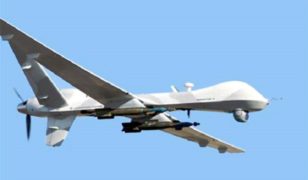Risk map by Aon illustrates terrorism threats by geographic area
 Aon Risk Solutions, the global risk management business of Aon plc, released on January 28 its annual Terrorism and Political Violence Map to help organizations assess risk levels of terrorism and political violence across the globe.
Aon Risk Solutions, the global risk management business of Aon plc, released on January 28 its annual Terrorism and Political Violence Map to help organizations assess risk levels of terrorism and political violence across the globe.
Produced in collaboration with global risk management consultancy, the Risk Advisory Group plc, Aon’s 2014 Terrorism and Political Violence Map comes in a print edition and as an online dashboard, providing clients with a clear global and country-level view on terrorism and political violence ratings.
Aon’s 2014 Terrorism and Political Violence Map indicates that Brazil was the only Latin American country to see its risk rating increase from medium to severe due to widespread and large-scale violent anti-government protests throughout 2013. The analysis indicates this unrest will likely continue in 2014, particularly ahead of the FIFA World Cup and the October general elections.
Despite some improvements in the ratings — eight decreases and just one increase to the 37 country scores that cover Sub-Saharan Africa in 2014 — Africa remains a continent of high political violence and terrorism risk, with 22 countries having high to severe risk ratings.
Empirically, the Middle East is the region most afflicted by terrorism in the world, with a 28% share of all terrorist attacks recorded worldwide in 2013, says a new release issued by Aon. A new strain of Salafi Jihadism has emerged in the Middle East and North Africa (MENA) region, as evidenced by increased levels of terrorism. This is a cause and effect of the limited political recovery of post Arab Spring countries, and has contributed to widespread high-to-severe risk ratings across the region.
When looking at attacks on businesses by sector, the retail and transportation sectors were significantly affected in 2013, with 33 percent of terrorism attacks affecting the retail sector, and 18 percent of attacks taking place on the transportation sector. The retail sector includes venues such as public markets, which remain vulnerable to attack as seen last year in Kenya. Terrorism remains a variable threat in the Eurasia region, with Russia and Turkey the most affected by the threat through 2013. Additionally, the Winter Olympics in Russia, which will involve significant mass transportation moves, is seen as a potential terrorist target.
Moreover, Japan, Mozambique and Bangladesh have also seen increased scores, with Bangladesh witnessing civil unrest over 70 days of strikes and accompanying protests, particularly against low wages and poor working conditions in the garments industry, adding to the issues impacting the retail sector.
According to Aon, the data shows:
- 34 countries attained reduced country risk scores;
- Four countries attained increased country risk scores — Brazil, Japan, Mozambique and Bangladesh;
- In contrast with other regions, Europe saw notable improvement, with 11 countries having civil commotion perils removed;
- Brazil was the only Latin American country to receive an increased risk rating;
- Overall country scores for Asia Pacific and Oceania region remain broadly stable with only four changes out of 29 countries and territories – South Korea, Malaysia and Samoa all attained reduced risk ratings — while increased military spending and geopolitical tensions in Japan increased the country’s rating;
- 33% of all high and severe risk countries globally are in sub-Saharan Africa.
Neil Henderson, head of Aon Risk Solutions’ Crisis Management Terrorism team, said, “The map shows that while the terrorism threat in the West has declined, other regions are witnessing significant increases in terrorist violence and activity. Having unrivalled access to regional data and fact-based insight enables our global clients to begin planning ahead of these trends by performing necessary risk identification and consider preventive risk management solutions. This insight allows our clients to plan overseas expansion or international growth and supports them in their efforts to be resilient to a terrorist or political violence threat.”







